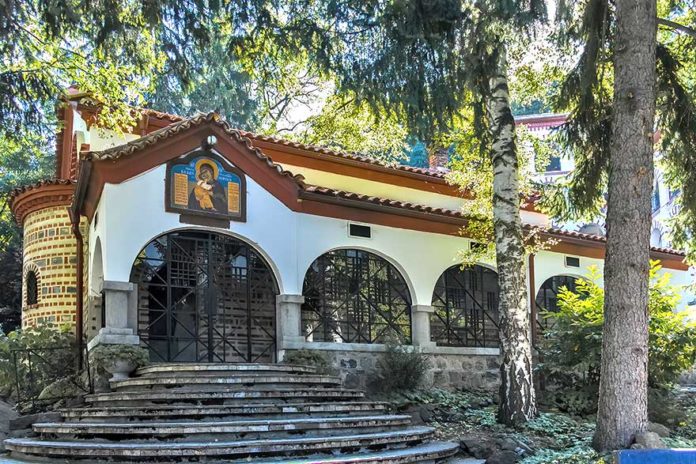The Dragalevski Monastery symbolizes Bulgaria’s rich cultural and historical heritage. First mentioned in the Vitosha golden seal of Bulgarian King Ivan Shishman (1371-1393), the monastery was originally founded during the reign of Ivan Alexander (1331-1371). It was part of a broader network of monasteries that flourished around Sofia in the 14th and 15th centuries. Unfortunately, following the Turkish occupation of Sofia in 1382, the monastery was destroyed and left abandoned.
A Revival in the 15th Century
In the latter half of the 15th century, the Dragalevski Monastery was revitalized. In 1476, a generous donation by Radoslav Mavur funded the reconstruction and painting of the St. Virgin Mary church. This began the monastery’s role as a crucial literary hub in Sofia. The monastery housed a scriptorium and a monastic school, producing handwritten texts that are still known today. Notable scribes include Pop Nikola, who transcribed the Gospels in 1469, and an unknown grammarian who copied the famous Dragalevski Gospel in 1534. This precious artifact, adorned with a silver frame from 1648, is now preserved in the Church Museum of Sofia.
The monastery’s literary contributions did not stop there. In 1598, brothers Daniel, Stoyan, and Vladko copied and decorated a psalter, which was later transferred to the Athonite Monastery of Iviron. Another significant work, Boyan’s Calendar, was penned by grammarian Yov Shishatovats in 1612.
Role in the Bulgarian National Revival
During the Bulgarian National Revival, the Dragalevski Monastery became a center of revolutionary activity. The monastery actively participated in the national liberation struggle under Igumen Hieromonk Gennady, a former standard-bearer of Ilyo Voivoda’s squad and a close associate of Vasil Levski.
The Monastery Today
Today, the Dragalevski Monastery is a remarkable complex with a church and residential quarters. The oldest complex’s remaining structure is the 15th-century single-nave church, adorned with two layers of frescoes. Inside the nave, you can still admire fragments of original scenes such as The Trial of Pilate, Judas Returning the Silver, The Hanging of Judas, and The Denial of Peter. Images of St. Roman the Melodist and St. Peter, among others, have survived centuries.
The church’s narthex boasts preserved frescoes, including Old Testament scenes such as Avraam’s Hospitality, Avraam’s Sacrifice, and The Prophet Elijah in the Cave. The portraits of the monastery’s founders, Radoslav Mavur, Vida, Stahna, and grammarian Nikola are also prominently displayed.
Visiting the Dragalevski Monastery
For anyone interested in Bulgarian history and culture, the Dragalevski Monastery is an essential destination. Its blend of rich history, literary significance, and architectural beauty makes it a must-see landmark. Located just outside Sofia, it is easily accessible by car or public transportation, making it a popular weekend retreat for locals and an ideal place to visit with children.
Embark on a journey through time and spirituality by discovering Bulgaria’s rich monastery heritage.



